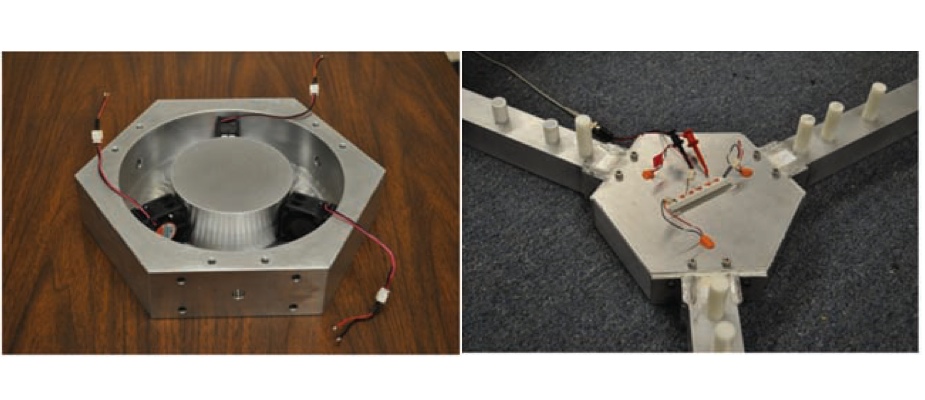
Scientists have created a one-way sound machine.
The device, called an acoustic circulator, breaks the fundamental principle that sound, and other types of waves, are a two-way street.
The findings, published today (Jan. 30) in the journal Science, could lead to the sound equivalent of a one-way mirror. With such a device, people can hear someone talking, but they themselves cannot be heard. [The 9 Biggest Unsolved Mysteries in Physics]
Wave nature
All waves — whether visible light, sound, radio or otherwise — have a physical property known as time reversal symmetry. What that means is that a wave sent one way can always be sent back.
"If I am able to talk to you, you should be able to talk to me back," said study co-author Andrea Alù, an electrical engineer at the University of Texas at Austin.
For radio waves, researchers figured out how to break this rule using magnetic materials that set electrons spinning in one direction. The resulting radio waves detect the difference in the material in one direction versus the other, preventing reverse transmission. As a result, transmission towers can broadcast the top 40 hits, without having the radio waves bounce back.
Get the world’s most fascinating discoveries delivered straight to your inbox.
One-way sound
But so far, researchers hadn't figured out how to complete the trick for other types of waves.
To accomplish the feat with sound waves, which are pressure oscillations in the air, the team created a cavity loaded with tiny CPU (central processing unit) fans that spin the air with a specific velocity. As sound waves go through the cavity, they are routed through one of three pipes (think of a sea star with the cavity in the center and each of the pipes is one of the sea star's appendages), each of which has a microphone at the end.
The air is spinning in one direction, so the flow of air "feels" different to the wave in one direction versus the other, preventing backward transmission. As a result, sound waves can go in, but they can't go the other way. The result is one-directional sound.
So, for instance, the listener at the end of the first pipe may send a sound signal to the second pipe, but the first pipe can't hear sound from the second. The second pipe may be able to send a signal to the third pipe, but not receive one.
Many applications
The new technique could be used to create the sound equivalent of one-way glass. There are some obviously stealthy ways to use the method, such as in spying devices.
"I can listen to you, but you cannot detect me back, you cannot hear my presence," Alù told LiveScience.
But the principle could also potentially be used to create one-way light waves.
The findings will likely lead to many useful applications, said Sebastien Guenneau, a metamaterials researcher at the Institut Fresnel in France, who was not involved in the study
"I would be surprised if sound industries do not pick up this idea," Guenneau told LiveScience. "This could have great applications in sound insulation of motorways, music studios, submarines and airplanes."
Follow Tia Ghose on Twitter and Google+. Follow Live Science @livescience, Facebook & Google+. Original article on Live Science.

Tia is the editor-in-chief (premium) and was formerly managing editor and senior writer for Live Science. Her work has appeared in Scientific American, Wired.com, Science News and other outlets. She holds a master's degree in bioengineering from the University of Washington, a graduate certificate in science writing from UC Santa Cruz and a bachelor's degree in mechanical engineering from the University of Texas at Austin. Tia was part of a team at the Milwaukee Journal Sentinel that published the Empty Cradles series on preterm births, which won multiple awards, including the 2012 Casey Medal for Meritorious Journalism.
 Live Science Plus
Live Science Plus






